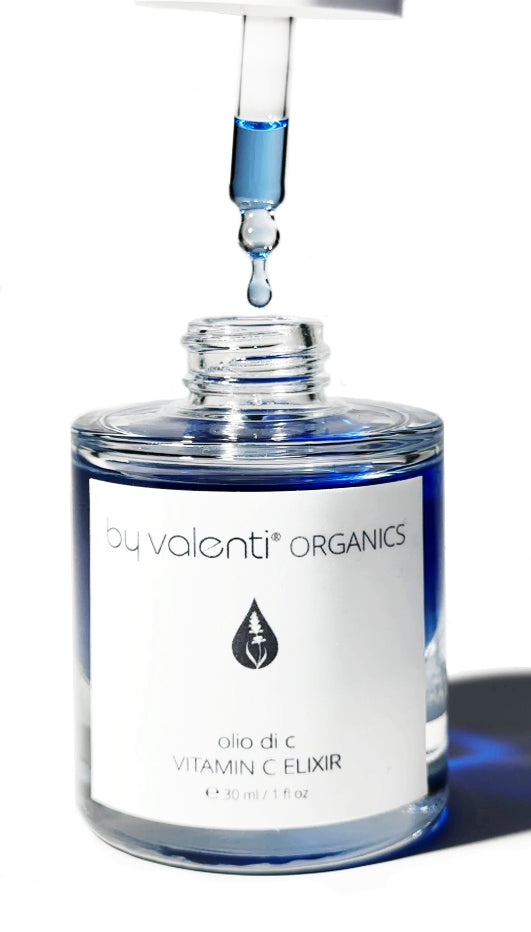Sin embargo, hay un fenómeno que ocurre en la industria del cuidado de la piel que a menudo pasa desapercibido incluso para los consumidores más exigentes: el etiquetado blanco .
El etiquetado blanco, también conocido como etiquetado por contrato o etiquetado privado, es una práctica en la que un fabricante de productos para el cuidado de la piel, generalmente un laboratorio, produce un producto o fórmula y lo vende a múltiples marcas, lo que les permite envasarlos en bonitos frascos o botellas, colocarles sus etiquetas y comercializarlos como propios .
Esto significa que diferentes marcas pueden ofrecer productos casi idénticos con diferentes empaques, afirmaciones, fragancias y colores a distintos precios.
El mundo oculto de las etiquetas blancas/privadas
El etiquetado blanco o el etiquetado privado no es exclusivo de la industria de la cosmética; está muy extendido en diversos sectores, desde la alimentación hasta la electrónica. Sin embargo, es especialmente frecuente en la industria de la belleza y el cuidado de la piel. Muchos consumidores no son conscientes de que sus productos favoritos puede no ser tan único como parece.
Así es como funciona normalmente el etiquetado blanco en la industria la cosmética:
Los científicos o formuladores desarrollan fórmulas: los fabricantes de productos invierten en investigación y desarrollo para crear fórmulas cosméticas que no son necesariamente efectivas. Estas fórmulas pueden incluir limpiadores, sueros, humectantes y más.
Las marcas compran estas fórmulas: las marcas cosméticas, a menudo las más pequeñas o las más nuevas, compran estas fórmulas predesarrolladas a los fabricantes o formuladores. Pueden optar por personalizar ligeramente la fórmula cambiando la fragancia o el color, o dejarla como está.
Marcas y envases: los fabricantes o formuladores suelen ofrecer opciones de envases adecuados e incluso etiquetas. Si no, las marcas compran estas fórmulas ya listas, desarrollan sus propios envases, etiquetas con la lista de productos proporcionada por el fabricante del producto, y diseñan el material de mercadeo. A menudo comercializan el producto como una creación única y exclusiva de su marca como argumento de venta. Sin embargo, al buscar la lista completa de ingredientes, a menudo se revela la misma fórmula con al menos 10 etiquetas diferentes de varias marcas.
Ventas: Los productos ya con una nueva marca e imagen, se venden en tiendas o en línea, a menudo a diferentes precios según la reputación de la marca y la estrategia de mercadeo.
El impacto en los consumidores desinformados
Si bien el etiquetado privado puede ofrecer algunos beneficios, como ahorros de costos para marcas más pequeñas y un desarrollo más rápido de productos, tiene varias implicaciones para los consumidores desprevenidos:
- Duplicación de productos: los consumidores pueden comprar, sin saberlo, varios productos para el cuidado de la piel de diferentes marcas, creyendo que son únicos cuando, en realidad, contienen la misma fórmula de algunos de los productos que ya tienen. Esto puede generar confusión y derroche de dinero.
- Precios inflados: algunos productos de marca blanca se venden a precios superiores en marcas conocidas. Los consumidores terminan pagando más por un producto que podrían encontrar a un precio más bajo en otra marca.
- Falta de transparencia: el etiquetado blanco o privado a menudo oculta el verdadero origen de un producto, lo que dificulta que los consumidores rastreen la fuente de la fórmula, las prácticas de fabricación o la calidad de los ingredientes.
- Preocupaciones sobre la eficacia del producto: Diferentes marcas pueden afirmar diferentes resultados o beneficios del mismo producto de marca blanca, lo que genera confusión sobre la eficacia real de la fórmula.
- Oportunidades perdidas: Los consumidores pueden perder la oportunidad de descubrir otros productos potencialmente más adecuados porque desconocen las fórmulas idénticas disponibles bajo etiquetas diferentes.
Cómo navegar en el mundo de las marcas blancas y privadas
Para navegar por el mundo del etiquetado blanco y tomar decisiones informadas sobre el cuidado de la piel, tenga en cuenta los siguientes consejos:
- Lea las listas de ingredientes: lea siempre atentamente la lista de ingredientes, ya que puede revelar si un producto es similar a otros del mercado o si ya está en su arsenal de belleza.
- Investigue las marcas con atención: investigue las marcas para ver si son transparentes en cuanto a sus procesos de fabricación y el origen de los ingredientes. Las marcas que priorizan la transparencia tendrán fórmulas únicas y las divulgarán como tales.
- Utilice Google a su favor: buscar la fórmula completa podría mostrarle otros productos con fórmulas similares o idénticas.
- No confíe en las certificaciones: en el cuidado de la piel, las certificaciones no significan mucho o nada en absoluto cuando se trata de fórmulas exclusivas o patentadas. Las certificaciones como orgánico, libre de crueldad animal o probado por dermatólogos solo se utilizan para demostrar que el producto A) cumple con la Certificación Orgánica del USDA si afirman que es el producto, pero esto solo es válido si el sello del USDA se muestra en la etiqueta de manera legal, ya que hay muchos que usan esta etiqueta sin aprobación, y B) el producto cumple con estrictas prácticas libres de crueldad animal, como el Programa Leaping Bunny. C) En el caso de Probado por Dermatólogos o Aprobado por Dermatólogos, realmente no significa nada, ya que cualquiera puede usar esa etiqueta incluso si ningún dermatólogo ha probado ni aprobado el producto, ya que no hay ninguna organización detrás que regule estas afirmaciones.
- Consulta reseñas y recomendaciones: busca reseñas y recomendaciones de productos de fuentes confiables, como dermatólogos, esteticistas o influencers de belleza de renombre. Pueden ayudarte a identificar productos efectivos independientemente de la marca. Solo ten cuidado con el influencer de belleza en el que confías, ya que hay algunos dudosos con miles de seguidores que dan a las masas los consejos equivocados.
- Considere la relación precio-eficacia: evalúe si el precio de un producto se corresponde con su calidad y rendimiento. No suponga que un precio más alto siempre significa un mejor producto.
- Apoye a las marcas transparentes: considere apoyar a las marcas que son transparentes en cuanto a sus procesos de fabricación y fuentes de ingredientes. Es más probable que ofrezcan fórmulas únicas e innovaciones genuinas en sus productos.
- Explora marcas menos conocidas: no limites tus opciones de cuidado de la piel a marcas conocidas. Las marcas menos conocidas o independientes pueden ofrecer productos innovadores y de alta calidad que no forman parte del ciclo de marca blanca, ¡al igual que nosotros!
- Haz preguntas: si tienes dudas sobre el origen o la fórmula de un producto, no dudes en ponerte en contacto con el servicio de atención al cliente de la marca y plantear tus dudas. Las marcas transparentes estarán encantadas de proporcionarte información.
- Esté atento a la frecuencia con la que una marca revela nuevos productos: una marca que formula sus propios productos basándose en sus propias fórmulas exclusivas exclusivas lanzará nuevos productos con mucha frecuencia. Una marca que compra fórmulas ya preparadas o que no sigue los protocolos establecidos para nuevas fórmulas, podría lanzar varios productos cada mes. En By Valenti, llevamos el desarrollo de nuevas fórmulas a un nivel completamente nuevo. No solo diseñamos nuestras fórmulas desde cero, sino que también las probamos y probamos, y cuando creemos que todo está bien, probamos un poco más. Una de nuestras fórmulas exclusivas requiere un costoso y largo proceso de seis meses a más de un año desde el diseño hasta la finalización. Por lo tanto, cuando compre uno de nuestros productos, puede estar seguro de que no encontrará copias en ningún otro lugar bajo ninguna otra marca, ya que no ofrecemos etiquetas privadas.
El etiquetado blanco, privado o por contrato en la industria del cuidado de la piel es una práctica generalizada que puede dejar a los consumidores desconcertados y potencialmente gastando más de lo necesario en productos que son, en esencia, idénticos y, a veces, no valen la pena en absoluto.
Al igual que en la industria de la moda y su moda rápida, la industria cosmética está experimentando una tendencia similar: fórmulas para el cuidado de la piel baratas y aparentemente efectivas.
Sin embargo, si cuenta con conocimiento y un ojo perspicaz, podrá navegar por este panorama de manera más eficaz. Si lee las listas de ingredientes, investiga las marcas y busca la transparencia, podrá tomar decisiones informadas sobre los productos para el cuidado de la piel que elija.
En última instancia, el objetivo es conseguir una piel sana y radiante sin caer víctima de trucos de marketing ni de gastos innecesarios.




